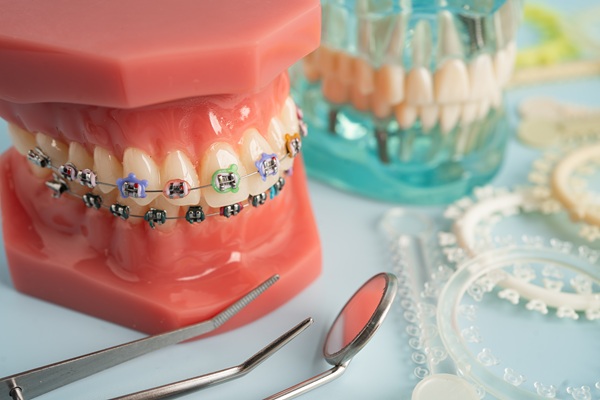No matter how careful we are with our teeth or how well we take care of them, they are still prone to damage and breakage. Anything from an unexpected physical accident or even genetics can lead to a chipped, cracked or discoloured tooth, turning perfect teeth into a problem area.
Luckily, composite bonding has been gaining more and more traction to help alleviate the problems. With its capability of being non-invasive, safe and cost-effective, it’s become the obvious choice for those who are looking to restore their smile to its natural beauty.
However, before you decide on whether or not you want to undergo composite bonding for your damaged teeth, it is important to know what it is first and the pros and cons that come with it.
Let’s dive right in!
What Are Composite Bonding?
Composite bonding involves applying a tooth-coloured resin material to the surface of your teeth to improve their appearance.
The resin is carefully shaped and polished to match the natural contours and colour of your teeth, resulting in a seamless and aesthetically pleasing outcome.
This procedure is often used to address various dental issues, including:
- Chipped Teeth: Repairing minor chips and fractures.
- Cracked Teeth: Restoring the structure and function of cracked teeth.
- Discoloured Teeth: Improving the colour and appearance of discoloured teeth.
- Gaps Between Teeth: Filling in small gaps to create a more uniform smile.
Read: Does Dental Hygiene Affect Your Heart Health?
Benefits of Composite Bonding
Teeth composite bonding offers several advantages, making it a popular choice for many patients seeking cosmetic dental improvements. Some of the key benefits include:
Quick and Non-Invasive
One of the biggest benefits of composite bonding is that it’s quick and doesn’t require much work.
Unlike more involved treatments like crowns or veneers, composite bonding usually needs little preparation and can be done in just one dentist visit. This makes it a great choice for patients who want a fast and effective fix for their dental issues.
Cost-Effective
Compared to other cosmetic dental treatments, composite teeth bonding is often more affordable.
The process doesn’t involve creating custom restorations or a lot of lab work, which helps keep costs down. This makes composite bonding a good choice for people on a budget who still want to enhance their smile.
Natural Appearance
Composite bonding uses a resin material that can be exactly matched to the colour of your natural teeth, which makes it look like your natural teeth.
The dentist carefully shapes and polishes the resin so that it blends perfectly with your teeth, making the repaired area look natural and unnoticeable. This makes composite bonding a great option for achieving a subtle and attractive result.
How is Composite Bonding Done?
Understanding what to expect during the composite bonding procedure can help you feel more confident and prepared. Here’s a step-by-step overview of the process:
Consultation
The process starts with a consultation with your dentist, who will check your dental needs and decide if composite bonding is the right choice for you. During this visit, your dentist will talk with you about your goals, examine your teeth, and create a personalised treatment plan.
Preparation
If composite bonding is suitable, your dentist will prepare the tooth by gently roughening its surface. This creates a texture that helps the resin stick better. A bonding agent is then applied to ensure the resin attaches securely to the tooth.
Application and Shaping
Next, the dentist applies the composite resin to the prepared tooth.
The resin is carefully shaped and moulded to fit the natural contours of your teeth. Your dentist will make sure the resin is properly aligned and blends smoothly with the surrounding teeth for a seamless look.
Curing and Polishing
Once the resin is in place, it is hardened using a special curing light. This process ensures that the material sets properly and becomes durable. After curing, the dentist will polish the bonded area to achieve a smooth and natural finish.
Post-Procedure Care
After the composite bonding procedure, you may experience some minor sensitivity, but this should subside within a few days. Your dentist will provide instructions on how to care for your bonded teeth, including recommendations for maintaining good oral hygiene and avoiding habits that could damage the bonding material.
In general, composite bonding’s quick, minimally invasive process, affordability, and natural look make it a popular choice for many patients. However, it’s still important to talk with your dentist to find out if composite bonding is the best treatment for your needs and goals. By understanding the pros and cons of composite bonding, you can make an informed decision and enjoy a beautiful, confident smile.
Read Next: Popular Cosmetic Dentistry Procedures in Australia
Feel Like Composite Bonding May Be the Solution For You?
So, the question remains, “Can teeth be restored with composite bonding” The answer is yes, composite bonding is an effective and convenient way to restore your smile and fix various dental issues.
At Bellevue Hill Dental, our tailored composite bonding solutions help individuals with permanent teeth damage get the chance to bring back their smile. Our team is here from start to finish, giving you the support you need throughout the process!
Schedule a consultation with us now or call our line at (02) 9158 1530 to know if composite bonding is the right treatment for your dental problem.we’ll be happy to help!



